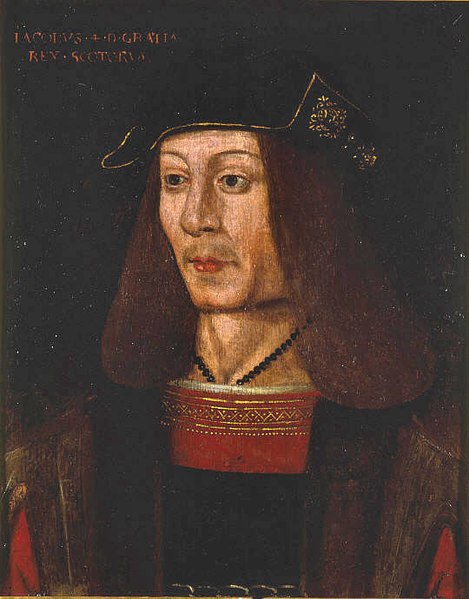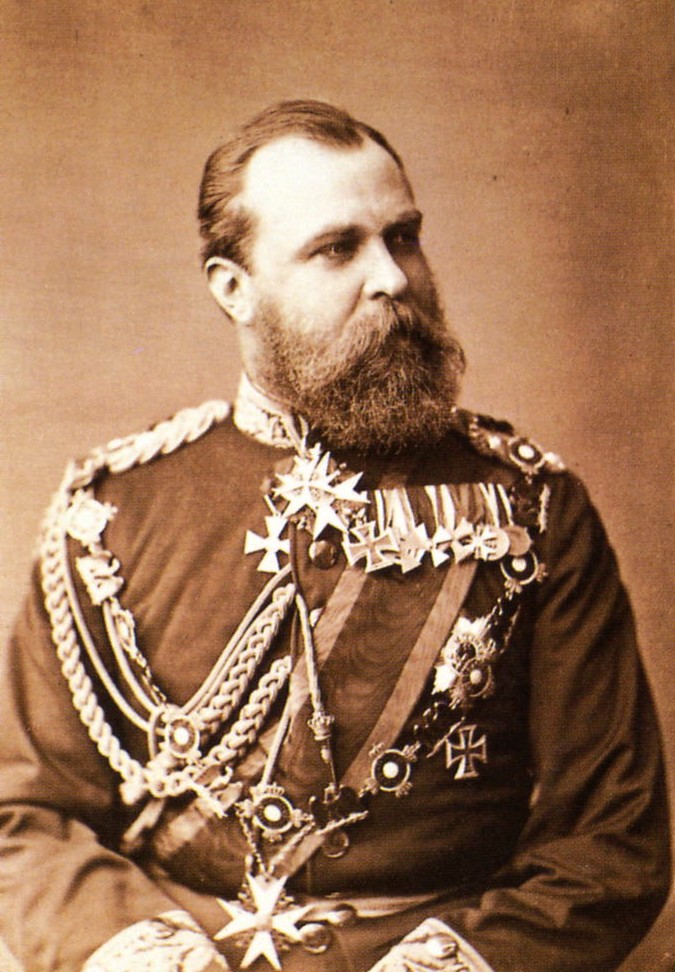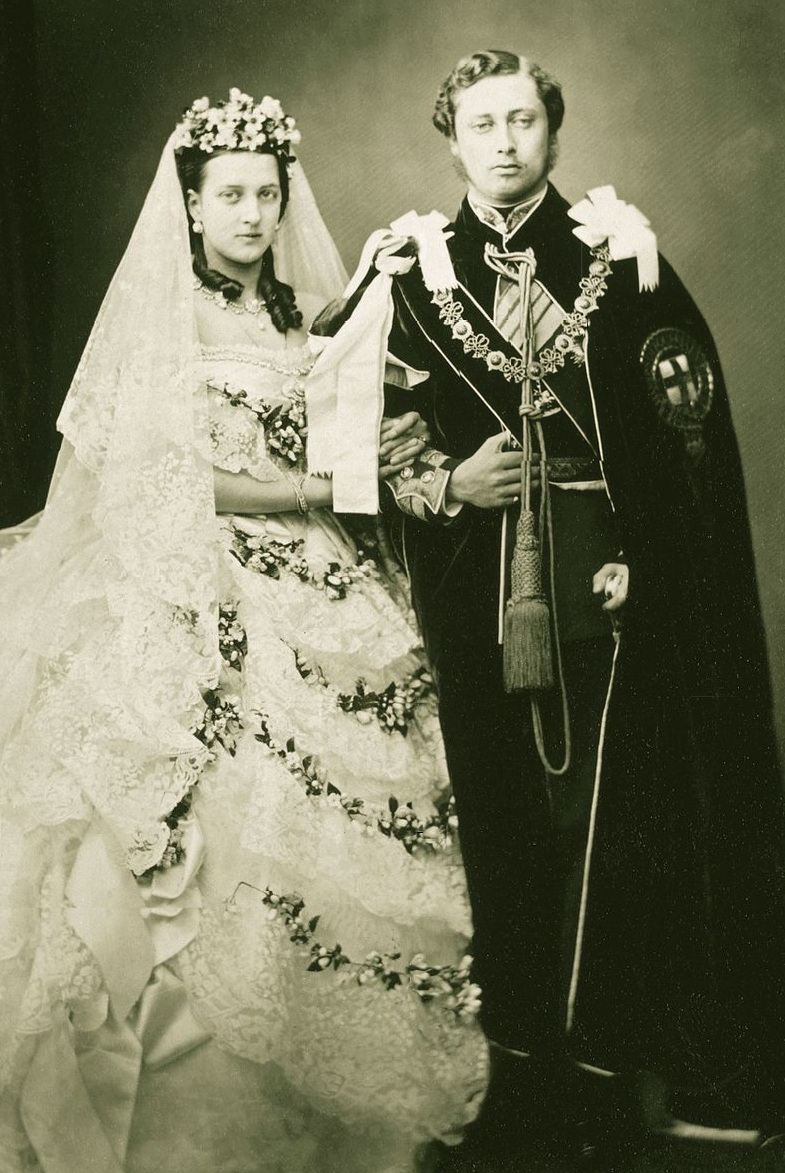© Unofficial Royalty 2025

James IV, King of Scots; Credit: Wikipedia
March 17, 1040 – Death of King Harald I (Harefoot) of England in Oxford, England; buried at St. Clement Danes Church in London, England
Harald Harefoot (also known as Harald I) was the son of Cnut the Great, King of England, Denmark, and Norway and his first wife Ælfgifu of Northampton. Cnut had decreed that any sons of his second marriage should take precedence over the sons of his first marriage. This meant that his son Harthacnut from his second marriage to Emma of Normandy was the legitimate heir to England and Denmark. Harald was elected regent of England after his father died in 1035. He initially ruled England in place of his half-brother Harthacnut, who was stuck in Denmark due to a rebellion in Norway. Although Harald had wished to be crowned king, the Archbishop of Canterbury refused to do so. It was not until 1037 that Harald was officially proclaimed king. 24-year-old Harald died after a reign of five years and was buried at St. Peter’s Abbey, the precursor to Westminster Abbey, which would start to be built on the site two years later. Harthacnut arrived in England and ascended the English throne unchallenged. He had Harald Harefoot’s body exhumed, decapitated, and thrown into a swamp, but then it was retrieved and thrown in the River Thames. A fisherman pulled Harald Harefoot’s body from the River Thames and it was buried at St. Clement Danes Church in London, originally founded by Danes in the ninth century.
Unofficial Royalty: King Harald I of England
March 17, 1473 – Birth of James IV, King of Scots, at Stirling Castle in Stirling, Scotland
James IV married Margaret Tudor, daughter of Henry VII of England and sister of Henry VIII of England, as part of a treaty between Scotland and England. James IV and Margaret had four sons and two stillborn daughters. Only one of their children, James V, King of Scots, the father of Mary, Queen of Scots, survived infancy. Despite the great hopes of peace between England and Scotland as symbolized by the marriage of Margaret and James IV, Margaret’s brother Henry VIII did not have his father’s diplomatic patience and was heading toward a war with France. James IV was committed to his alliance with France and invaded England. Henry VIII was away on campaign in France and Flanders in 1513 and he had made his wife Catherine of Aragon regent in his absence. It was up to Catherine to supervise England’s defense when Scotland invaded. Ultimately, the Scots were defeated at the Battle of Flodden near Branxton, Northumberland, England on September 9, 1513, and 30-year-old King James IV was killed in the battle. Catherine sent Henry VIII the blood-stained coat of his defeated and dead brother-in-law. James IV’s seventeen-month-old son succeeded his father as James V, King of Scots.
Unofficial Royalty: James IV, King of Scots
March 17, 1814 – Birth of Kamehameha III, King of the Hawaiian Islands in Keauhou Bay, on the island of Hawaiʻi in the Kingdom of Hawaii
Kamehameha III, King of the Hawaiian Islands, reigned from 1825 to 1854. He was the longest-reigning monarch of the Kingdom of the Hawaiian Islands, reigning for 29 years and 192 days. In 1837, Kamehameha III married Kalama Hakaleleponi Kapakuhaili, the only child of High Chief Naihekukui, who was commander of the native Hawaiian fleet at Honolulu. The couple had two sons, but they both died in infancy. During his reign, Kamehameha III’s goal was a careful balance of modernization by adopting Western ways while keeping his nation intact. On December 15, 1854, at the ʻIolani Palace in Honolulu, Kamehameha III suddenly died, aged 40, after a brief illness, possibly related to a stroke.
Unofficial Royalty: Kamehameha III, King of the Hawaiian Islands
March 17, 1817 – Birth of Kalama, Queen Consort of the Hawaiian Islands, wife of King Kamehameha III, in Kailua, on the island of Oahu, Kingdom of the Hawaiian Islands, now in the state of Hawaii
Kalama Hakaleleponi Kapakuhaili was the only wife of King Kamehameha III of the Hawaiian Islands, the first Hawaiian king not to practice polygamy. Kalama was the only child of Naihe Kukui Kapihe and Chiefess Iʻahuʻula, the younger sister of Charles Kanaʻina, who served on both the Privy Counsel as an advisor to the Kings of the Hawaiian Islands and in the House of Nobles. Kamehameha III and Kalama had two sons, but they both died in infancy. Kalama outlived her husband Kamehameha III and his nephew Kamehameha IV, and was known as the Queen Dowager. In 1869, during the reign of Kamehameha V, she welcomed Queen Victoria’s son Prince Alfred, Duke of Edinburgh on his visit to the Kingdom of the Hawaiian Islands. Kamala, aged 53, died during the reign of Kamehameha V, on September 20, 1870, in Honolulu, on the island of Oahu.
Unofficial Royalty: Kalama, Queen Consort of the Hawaiian Islands, wife of King Kamehameha III
March 17, 1849 – Death of King Willem II of the Netherlands in Tilburg, the Netherlands; buried at the Nieuwe Kerk in Delft, the Netherlands
When he was two years old, Willem’s family was forced into exile when the French invaded and occupied the Dutch Republic during the Napoleonic Wars. Willem spent his childhood at the Prussian court. He received military training, served in the Prussian Army, and then attended Oxford University in England. In 1811, he entered the British Army and was an aide-de-camp to Arthur Wellesley, 1st Duke of Wellington. Willem’s family returned to the Netherlands in 1813 after the French retreated. In 1816, Willem married Grand Duchess Anna Pavlovna of Russia and the couple had five children. Willem came to the Dutch throne in 1840 when his father King Willem I abdicated due to constitutional changes he disagreed with, anger over the loss of Belgium, and his desire to make a morganatic second marriage with Henriëtte d’Oultremont after the death of his wife. During Willem II’s reign, the power of many monarchs diminished. The revolutions of 1848 and 1849, in which Louis-Philippe of France was deposed and other European monarchs were forced by violence to make concessions, made him fear for his throne. Willem decided to institute a more liberal government, believing it was better to grant reforms instead of having them imposed on him on less favorable terms later. During the few months of his life, Willem had health issues. He died, aged 57, on March 17, 1849.
Unofficial Royalty: King Willem II of the Netherlands
March 17, 1886 – Birth of Princess Patricia of Connaught, granddaughter of Queen Victoria of the United Kingdom, at Buckingham Palace in London, England
Full name: Victoria Patricia Helena Elizabeth
Known as Patsy in the family, Princess Patricia was the daughter of Prince Arthur, Duke of Connaught and Princess Louise Margaret of Prussia. When she married Sir Alexander Ramsay, she voluntarily relinquished the style of Royal Highness and the title of Princess of Great Britain and Ireland, and assumed the style Lady Patricia Ramsay. However, Lady Patricia remained a member of the British Royal Family, remained in the line of succession, and attended all major royal events including weddings, funerals, and coronations.
Unofficial Royalty: Princess Patricia of Connaught
March 17, 1904 – Death of Prince George, 2nd Duke of Cambridge, son of Prince Adolphus, Duke of Cambridge, at his home, Gloucester House in London, England; buried in a mausoleum at Kensal Green Cemetery in London, England
George was a male-line grandson of King George III, a first cousin of Queen Victoria, and the maternal uncle of Princess Victoria Mary (May) of Teck, the wife of King George V. Like his father, George had a career in the British army and was eventually Commander-in-Chief of the Forces. In 1847, George married actress Louisa Fairbrother in contravention of the 1772 Royal Marriages Act. The three children born of the marriage were considered illegitimate. Queen Victoria ignored her existence, and Louisa was not styled and titled as befitted the wife of George. She was first known as Mrs. Fairbrother and later as Mrs. FitzGeorge. In 1850, George’s father died and George became the 2nd Duke of Cambridge. Louisa died in 1890, at the age of 73. On March 17, 1904, Prince George, Duke of Cambridge died at the age of 84. Because George’s sons were illegitimate, his title Duke of Cambridge became extinct. 107 years later, the title Duke of Cambridge was created for Prince William, the great-great-great-great-grandson of George’s father Prince Adolphus, 1st Duke of Cambridge, on the occasion of William’s wedding.
Unofficial Royalty: Prince George, 2nd Duke of Cambridge
This article is the intellectual property of Unofficial Royalty and is NOT TO BE COPIED, EDITED, OR POSTED IN ANY FORM ON ANOTHER WEBSITE under any circumstances. It is permissible to use a link that directs to Unofficial Royalty.







